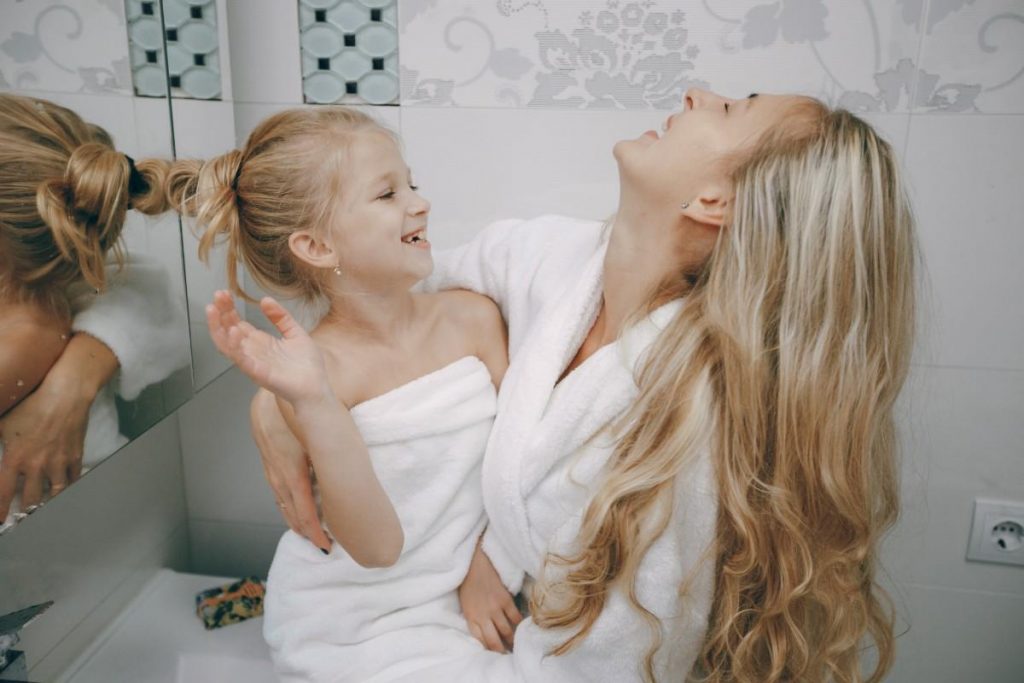
Caring for a child’s scalp and hair is quite different from managing adult hair. This is primarily because a newborn’s scalp and hair are extremely delicate and require gentle, mindful treatment. While some babies are born with little or no hair, others may have a full head of hair. Regardless of the amount of hair, the basic guidelines for toddler hair care remain largely the same. Here are some essential rules you should follow when caring for your newborn’s scalp and hair.
Children’s hair has unique needs compared to adult hair. The diameter, texture, and color of a child’s hair continue to develop until they are about 10 to 12 years old. Generally, a child’s hair is much more delicate than an adult’s. Here are some tips to keep in mind when caring for a newborn’s hair:
No Daily Wash:
It’s not necessary to wash your child’s hair daily. Experts generally advise against daily shampooing because it can be too harsh for your infant’s delicate hair and scalp. Children’s hair tends to be drier and less oily than adult hair, as their sebaceous glands do not produce significant amounts of oil until puberty. This means your baby’s hair isn’t as dirty as it might appear, and often, rinsing with just water is sufficient. Even sweat can be effectively removed with water alone. Shampooing once a week for an infant or twice a week for toddlers and up should be adequate.
However, use your judgment. If your baby frequently visits the beach, attends swim classes, or tends to get food like ice cream in their hair, you might need to wash their hair more often.
Mild & De-Tangling Products:
Once your child is old enough to avoid getting shampoo in their eyes, you can consider using an adult shampoo. Choose a product with a low pH, ideally no higher than 6, as a higher pH can lead to drier hair. Look for an ultra-mild shampoo, possibly one that is sulfate-free, which tends to create less lather and be less drying than other shampoos.
Conditioner is mainly useful for detangling; therefore, it’s generally not recommended for children with short hair. For children with long hair, which is prone to tangling, using a detangling conditioner every time you wash their hair can be helpful. Make sure to comb through the hair with the conditioner before rinsing to ensure it’s evenly distributed. Avoid applying conditioner directly to the scalp to prevent any buildup or irritation.
Massage Everyday:
Use a specially formulated baby massage oil or hair oil to gently massage your child’s scalp each day. This is best done before bath time. Massaging helps to gently remove dead skin cells and any dry, flaky skin, making your baby’s scalp soft and smooth. This practice is especially beneficial for newborns with cradle cap.
Choose a soft and soothing massage oil that is enriched with gentle, nourishing ingredients like coconut oil, almond oil, olive oil, and Vitamin E. These ingredients help to nourish and condition the skin, leaving it healthy and delicate.
Regular Moisturization is Essential:
Just like the rest of their body, a child’s hair needs hydration. When the body lacks sufficient moisture, it becomes dehydrated, affecting its overall function. Similarly, hair becomes brittle and prone to breakage without adequate moisture. Since hair cannot absorb water internally the way the body does through drinking, it must be moisturized externally. It’s crucial to moisturize a child’s hair daily, using a product where water is the primary ingredient.
Avoid adult shampoos and conditioners, which can be too harsh for a baby’s sensitive scalp. Always use lukewarm water for baths to prevent drying out the scalp.
Avoid Tight Styling on the Same Day:
A baby’s scalp requires gentle handling, which means allowing it time to breathe between styles. Removing and immediately redoing plaits can strain the hair follicles, potentially leading to scalp sensitivity, infection, or traction folliculitis, which are bumps caused by pulling the hair. To protect a baby’s scalp, remove plaits a day before re-plaiting.
Busy caregivers might prefer hairstyles that last longer, but these should not compromise the child’s scalp health. Tight, thin plaits can put excessive tension on a delicate scalp, leading to damaged follicles, thinning hair, and poor hair growth. Opt for hairstyles that are suitable for children and avoid tight plaits.
Each child is unique, so it’s important to tailor the hair care routine to their specific needs. Consulting a dermatologist or a knowledgeable product expert for personalized advice is always wise. By adhering to these guidelines, you can help ensure that a child’s hair remains healthy.
No Harsh Stuff:
When selecting a shampoo for your child, especially one with dry hair, opt for products that are free from harsh chemicals like sulfates, parabens, and synthetic fragrances. These ingredients can be tough on delicate skin and might contribute to further dryness or irritation.
In choosing the best kids’ shampoo for dry hair, look for gentle and soothing formulas that cleanse without causing irritation. Choose products that not only effectively manage dandruff but are also gentle on the scalp.